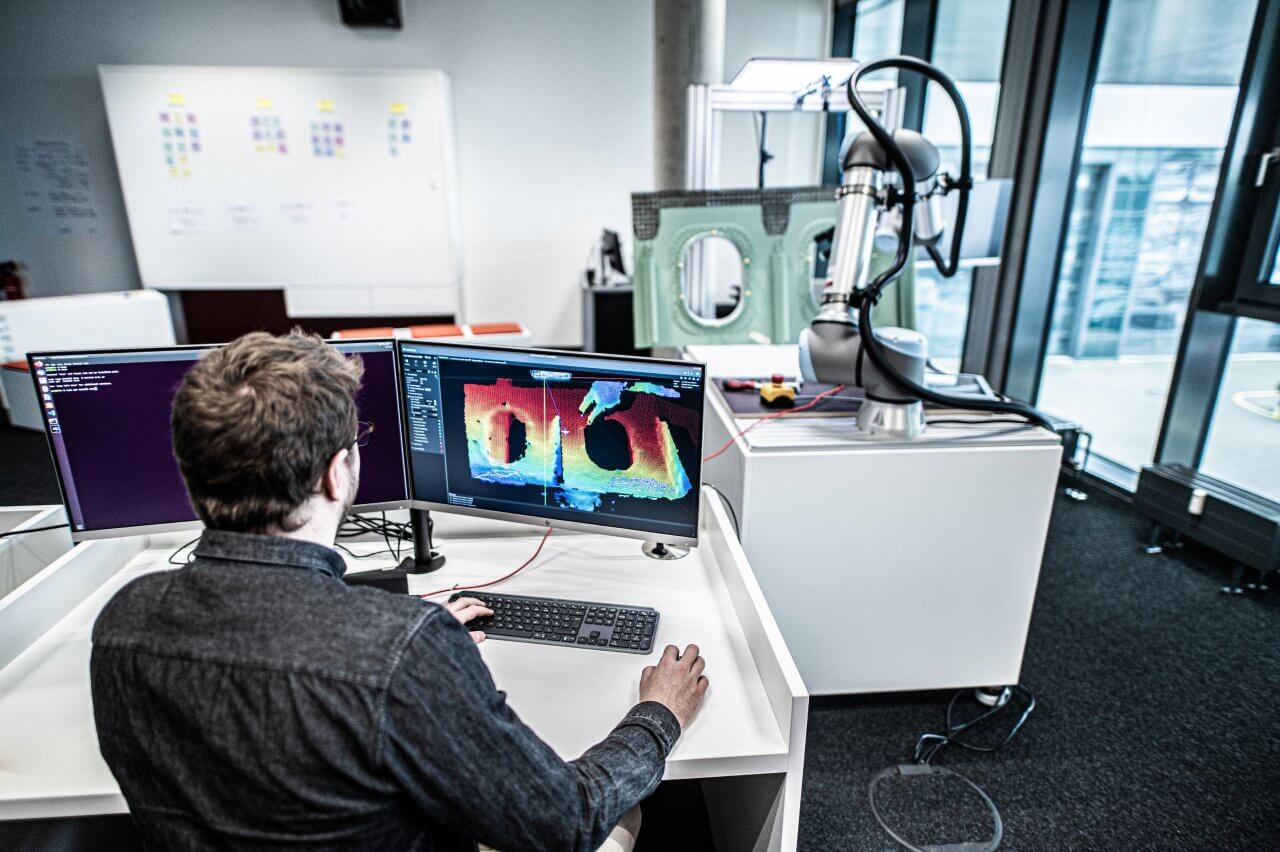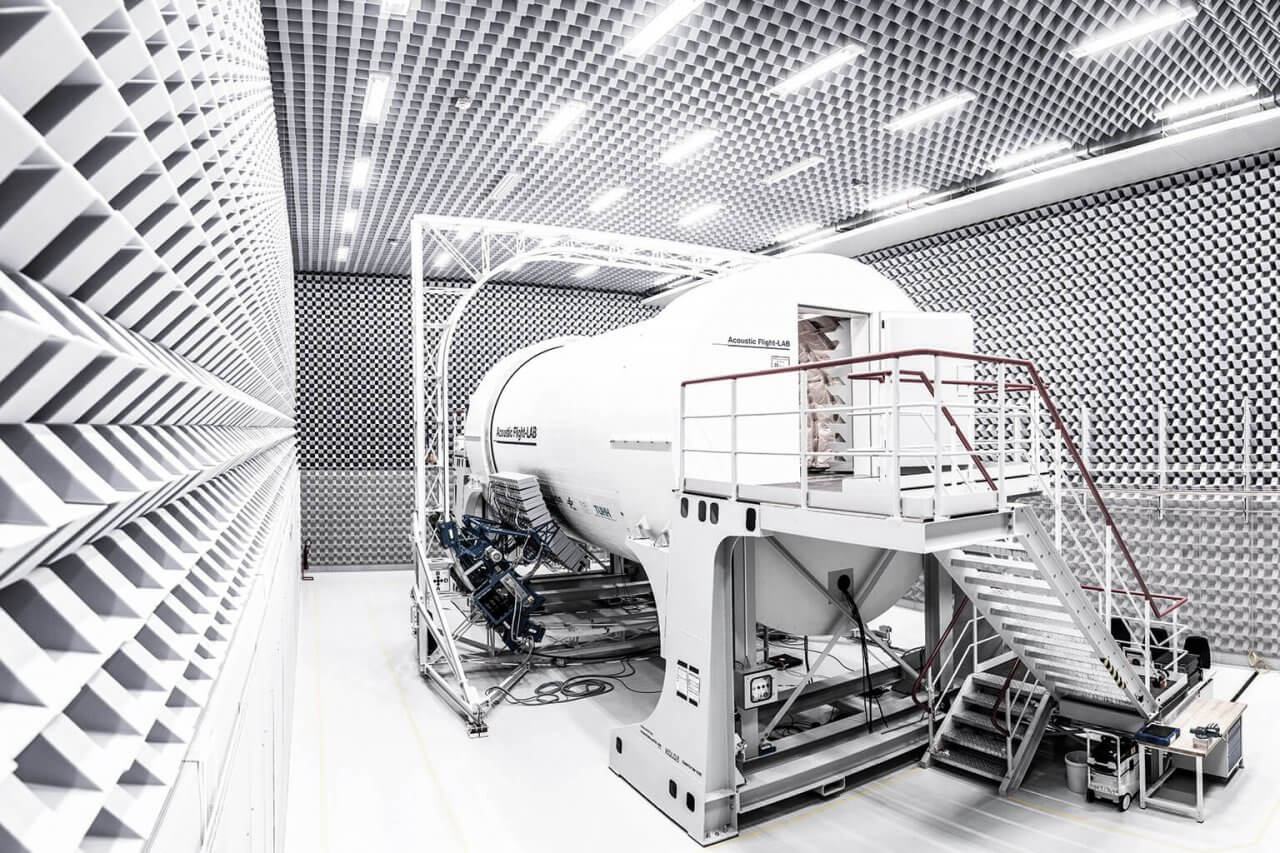Drones have a wide range of applications for transportation and surveillance tasks. A limiting factor in their operational times has so far been the battery electric drives. A new generation of revolutionary drones with fuel cells is currently being developed at the ZAL in Hamburg. The research location in focus. An interview by Oliver Schenk, Hydrogen Marketing Manager of the Renewable Energy Hamburg (EEHH) cluster, with Miriam Flügger, Head of Corporate Communications at ZAL Center for Applied Aviation Research.
Schenk: ZAL is the flagship for aviation research far beyond Hamburg. What research is being conducted there and what is your technical equipment like?
Flügger: In addition to ordinary office workstations, we have hall and laboratory spaces at ZAL, where specific research infrastructures are available to us, including test rigs for suspending aircraft fuselages, an AI Lab, a gym-sized Acoustics Lab for ground flight tests, or the Fuel Cell Lab. The latter includes research areas equipped with gas connections for hydrogen, oxygen, compressed air, and nitrogen. Various safety facilities such as ventilation or gas warning devices are also available. The design of the areas is again subject to individual research partners such as Airbus or DLR, who are very active here. We, ZAL GmbH, have a test bench for characterizing fuel cell systems, variable setups for investigating various questions related to the real operation of stacks, and flying platforms in the form of hydrogen-powered drones. In addition, a fully equipped workshop is available to all partners, which is suitable for building prototypes.
Schenk: What can external companies utilize?
Flügger: The use of the infrastructures depends on the degree of integration of the companies into ZAL. Currently, we have around 30 companies that have rented fixed spaces at ZAL to advance their topics in the long term. The spaces are individually designed and used. And usually, external parties only gain access to the areas as research partners within the framework of projects.
However, with the current completion of the building expansion, areas suitable for external projects are also being created. The offering is based on the demand for flexible rental spaces that can also be rented for shorter periods. This is particularly interesting for collaborative research projects in which internal and external partners work simultaneously or successively on different milestones. The Flex Space includes halls, laboratories, or offices with or without technical equipment.
Flügger: Hydrogen research is one of our most important research fields. And, what many do not know, it has been an important part of our strategy since 2009, the founding year of ZAL. Overall, ZAL is characterized by a variety of topics. These include, besides hydrogen, robotics and automation, AI and simulation, 3D printing, or acoustics. Technologies that reflect current topics and tech trends in aviation. Interestingly, it is often the case that innovations arise from the combination of different research areas. In a current research project, for example, the automation of fuel cell production is being investigated, involving smart sensors, an AI designed to optimize production.
The project is a nice example to illustrate how important “outside the box” thinking is. An approach that is also reflected in our considerations and discussions with various players in the maritime industry: conducting hydrogen research across sectors to create synergies. For example, the CML, Fraunhofer Center for Maritime Logistics and Services, will occupy space at ZAL as part of the ITZ.
Schenk: What is your vision for both your location and your research projects?
Flügger: Decarbonizing aviation is a priority in the coming years. However, it is important to understand that there is not one solution to be developed. Even though we talk a lot about hydrogen as a hopeful candidate in aviation, this is just one aspect we are looking at. We must consider the entire lifecycle of an aircraft. This includes production processes and materials used as well as operation, maintenance, and recycling. Hamburg has the decisive advantage that we have players from all areas represented here. The big goal of sustainable aviation is therefore being pursued from many angles. The role of ZAL is to support the actors as a neutral research platform to the maximum extent. Accordingly, ZAL is to be expanded in two steps. By adding a wing to a building, we are currently increasing our research space from 26,000 to 34,000 square meters. Another new building on the opposite side of the street is also planned. A lot of new space for researchers, test facilities, and networking events.
Schenk: What is special for you about collaboration in ZAL?
Flügger: The place thrives on lively exchange. Employees of the companies have many opportunities to meet and exchange ideas, whether in the café, at the in-house kicker league, summer after-work events, or professional conferences. Networking is highly valued here, it is a prerequisite for good cooperation – from which research immensely benefits.
This interview was published on the Blog of Renewable Energy Hamburg. More information can be found here: www.renewable-energy-hamburg.de













